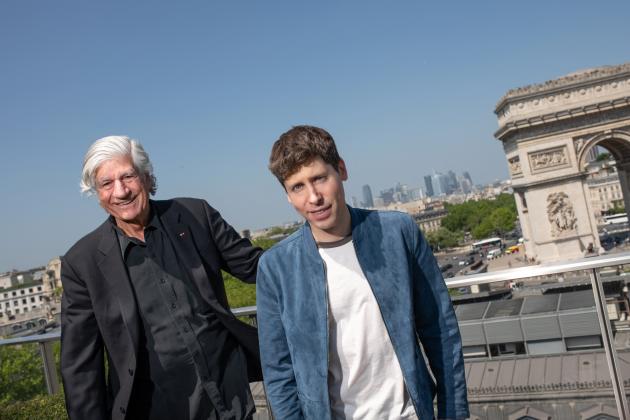A museum full of paintings by masters. A student out of inspiration. And a white sheet that his teacher is eyeing, annoyed. At first glance, nothing very exciting. Except that… a sip of Coca-Cola – and a strong dose of artificial intelligence (AI) – will allow the lonely student to find inspiration in a breathtaking spot two minutes. The bottle will thus rip from table to table, from Wide Coca-Cola, from Andy Warhol, to the artist Wonder Buhle and his painting You Can’t Curse Mefrom Vermeer and his Girl with a Pearl Earring in Munch and The Screamchanging texture according to the works it crosses and the artificial intelligence techniques used.
This global “Masterpiece” campaign would never have seen the light of day without the AI generator Stable Diffusion, nor the London start-up Stability AI. Already in February, Coca-Cola had signed a partnership with Open AI (owner of the text generator software ChatGPT, and of images Midjourney and Dall-E) and the consulting group Bain for its future advertising creations. A turn immediately deciphered as the eloquent symbol of the upheavals to come. Coca-Cola is the first brand to sign a contract with Open AI.
Something to sharpen the attention of the “big cats” of communication. Within a year, the machine got carried away. Publicis, the first, took the plunge. In October 2022, the global market leader by market capitalization entered into an exclusive agreement with Open AI, and then, in the process, with its reference shareholder Microsoft. In 2017, its artificial intelligence platform Marcel had already signed a partnership with Microsoft, using Open AI extensively.
In April 2023, it was the turn of John Wren, boss of the American Omnicom, the third player in the sector, to enter into an agreement with the same Open AI which offers him direct access to its algorithms, but without however offering him the possibility of designing an advertising campaign based on its data. Finally, on May 29, WPP, world number two on the market, put its initials on an alliance with the chip giant Nvidia. The generative AI war is declared.
Always more content
But what’s surprising? While brands foresee a reduction in production costs, advertisers are themselves being called upon to produce, in an almost industrial way, ever more personalized content for social networks.
Because the time is over when agencies were content to design products specific to each of the five major media, television, radio, the press, posters and cinema. “ Today, we sometimes have 300 pieces of content to produce (videos and Reels on social networks, SMS, press releases, emails, radio spots, etc.)”, notice Frédéric Tresal-Mauroz, boss of Prodigious, the Publicis production company. Which content will be distributed in different formats, languages, or even packaging. “If we employed people to do it, we would absolutely no longer be profitable, he continues. We have a long history of using AI with productivity gains of up to 30%. »
You have 75.12% of this article left to read. The following is for subscribers only.
